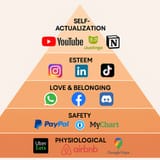Anonymous
(ID: P5Py6/nl)
6/21/2025, 4:11:42 PM
No.508195356
>>508195394
>>508195435
>>508199891
>>508200324
>>508202138
LETS CONTINUE: MOUSE UTOPIA / MODERN SOCETY THROUGH AI - CONDENSED VERSION
Demographic Collapse & Calhoun’s Mouse Utopia — Where We Are
In 1968, John B. Calhoun’s Mouse Utopia experiments demonstrated a paradox: in a world of unlimited resources, mouse societies still collapsed. Despite abundant food, shelter, and safety, social behaviors broke down. As population density increased, roles dissolved—females abandoned their young, males stopped mating or turned violent, and a class of passive, beautiful, disengaged mice emerged. The population died out completely.
This isn’t a metaphor anymore—human societies are tracking the same curve. HDI (Human Development Index) continues to rise globally, and yet, fertility collapses. South Korea (TFR ~0.72), Japan, and much of Europe now sit far below replacement rates. Even in well-off welfare states, fertility does not recover. Once societies pass ~1.5 fertility, they rarely bounce back—matching the non-recovery seen in Calhoun’s experiments.
Concurrently, emotional degradation mirrors the behavioral sink seen in the mouse world. Dating apps (e.g., Tinder), parasocial intimacy (e.g., OnlyFans), and digitized validation (e.g., TikTok, Instagram) give the illusion of social connection while removing depth, risk, and responsibility. The social roles required for human continuity—parent, partner, protector—are dissolving.
We are now at a Phase C-to-D transition in Mouse Utopia terms: reproduction has slowed, the social script is failing, and emotional engagement is collapsing. From the mice to modern megacities, this pattern plays out when societies no longer emotionally or structurally support the reproduction of purpose or self.
In 1968, John B. Calhoun’s Mouse Utopia experiments demonstrated a paradox: in a world of unlimited resources, mouse societies still collapsed. Despite abundant food, shelter, and safety, social behaviors broke down. As population density increased, roles dissolved—females abandoned their young, males stopped mating or turned violent, and a class of passive, beautiful, disengaged mice emerged. The population died out completely.
This isn’t a metaphor anymore—human societies are tracking the same curve. HDI (Human Development Index) continues to rise globally, and yet, fertility collapses. South Korea (TFR ~0.72), Japan, and much of Europe now sit far below replacement rates. Even in well-off welfare states, fertility does not recover. Once societies pass ~1.5 fertility, they rarely bounce back—matching the non-recovery seen in Calhoun’s experiments.
Concurrently, emotional degradation mirrors the behavioral sink seen in the mouse world. Dating apps (e.g., Tinder), parasocial intimacy (e.g., OnlyFans), and digitized validation (e.g., TikTok, Instagram) give the illusion of social connection while removing depth, risk, and responsibility. The social roles required for human continuity—parent, partner, protector—are dissolving.
We are now at a Phase C-to-D transition in Mouse Utopia terms: reproduction has slowed, the social script is failing, and emotional engagement is collapsing. From the mice to modern megacities, this pattern plays out when societies no longer emotionally or structurally support the reproduction of purpose or self.

